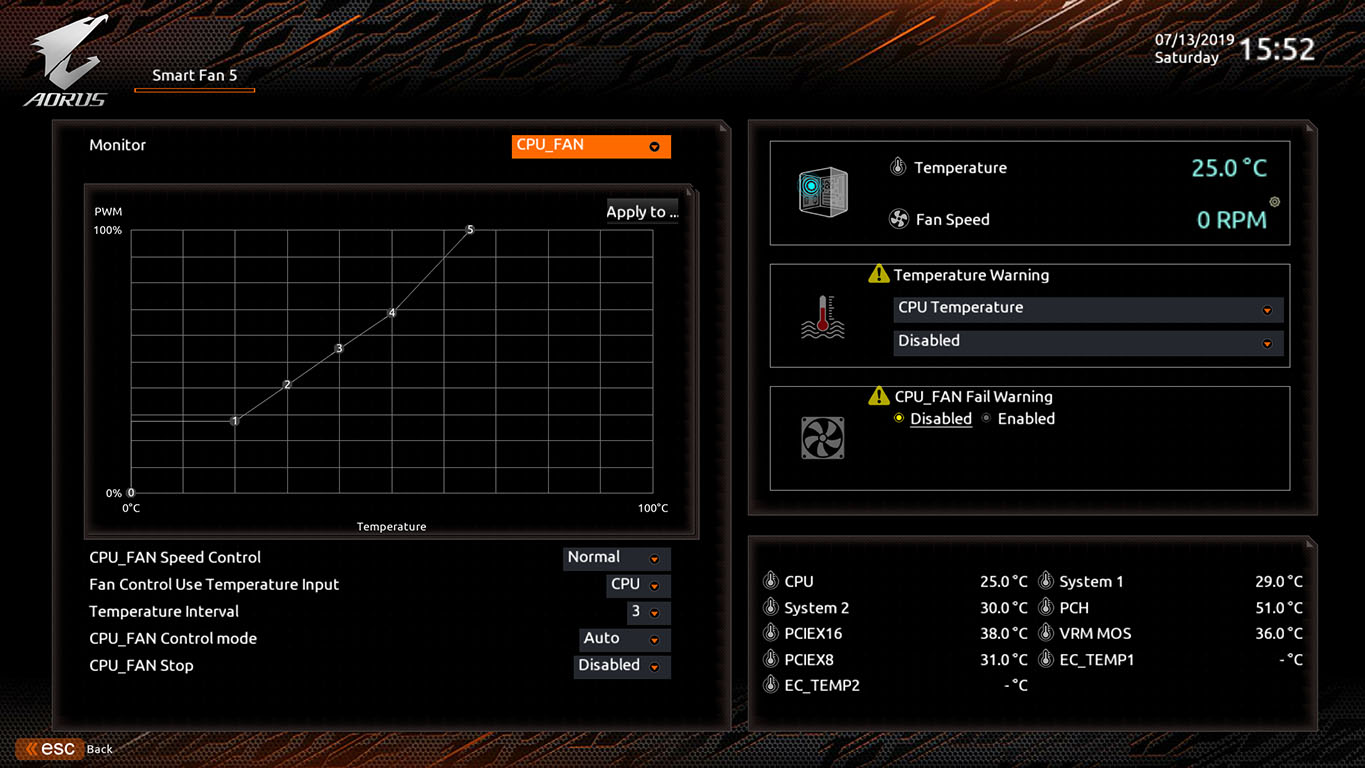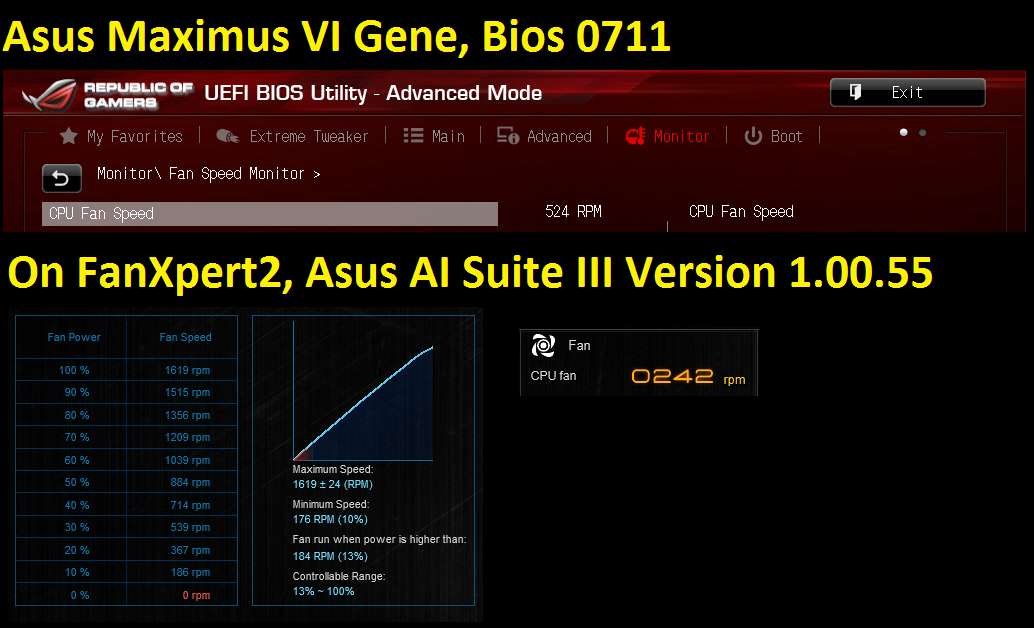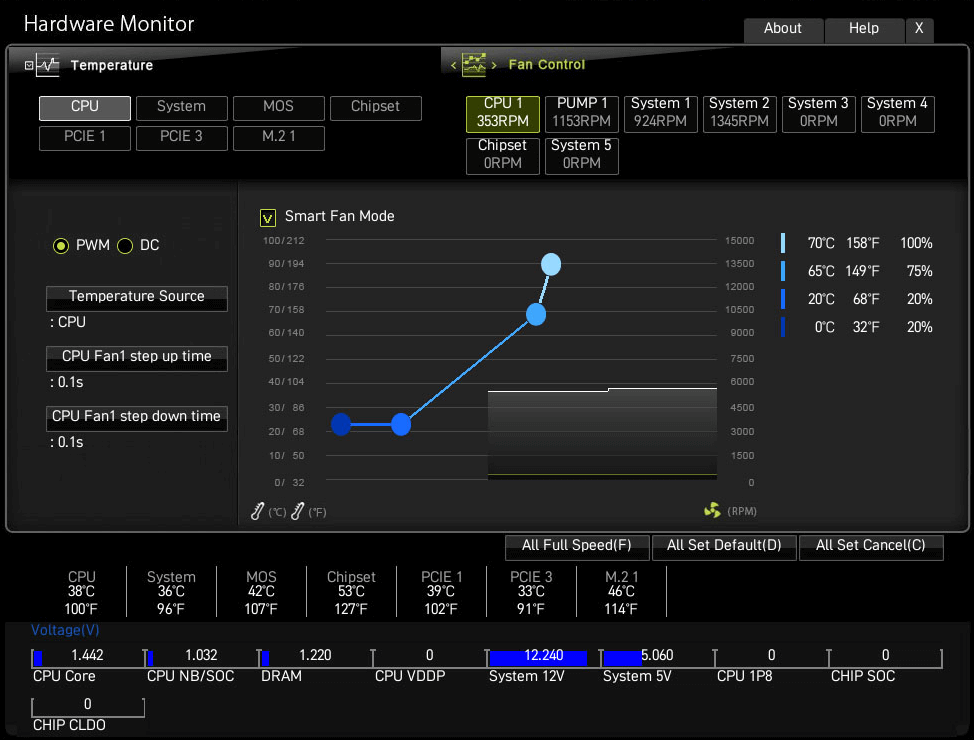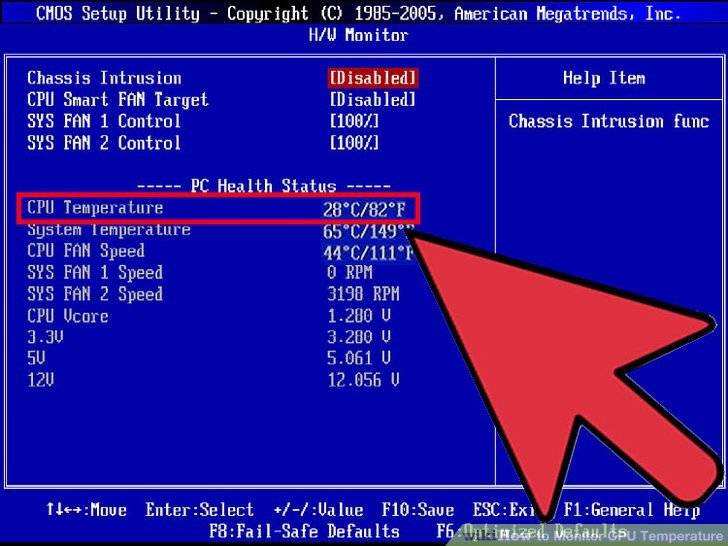

My hardware monitor of choice is HWiNFO if you use it, the reading to look out for is Tdie (or Tctl/Tdie), not Tctl on its own (if present).

After that point, they ramp up to a maximum speed of 90% at 90 degrees Celsius. Here, you can see that I have my CPU cooler fans to run at a static 45% up to 65 degrees Celsius. So go through the step-by-step processes outlined to figure out the best temperatures and fan speeds for you. You will have to experiment with temperature breakpoints and fan speeds yourself, depending on case airflow, fan setup, and ambient temperatures. I’ve based this guide on my experience using and running air-cooled rigs in relatively airflow-friendly cases (such as the Fractal Meshify 2). How to Set Fan CurvesĪ quick note before we start. So, if you’re struggling finding that balance, these fan curves might just be for you.

It’s not necessarily what everyone wants, but we feel it’s a good middle ground that should work for most users. The idea is to create fan curves that reduce noise on the desktop while still offering adequate cooling when gaming. While there’s no perfect solution, this fan curve guide should help you strike a good balance between noise and cooling. And then there are those overly-sensitive fans that constantly speed up and slow down during everyday use. Default fan settings often aren’t ideal, usually running too hot or too loud.

Having trouble with fan noise? You’re not alone.


 0 kommentar(er)
0 kommentar(er)
